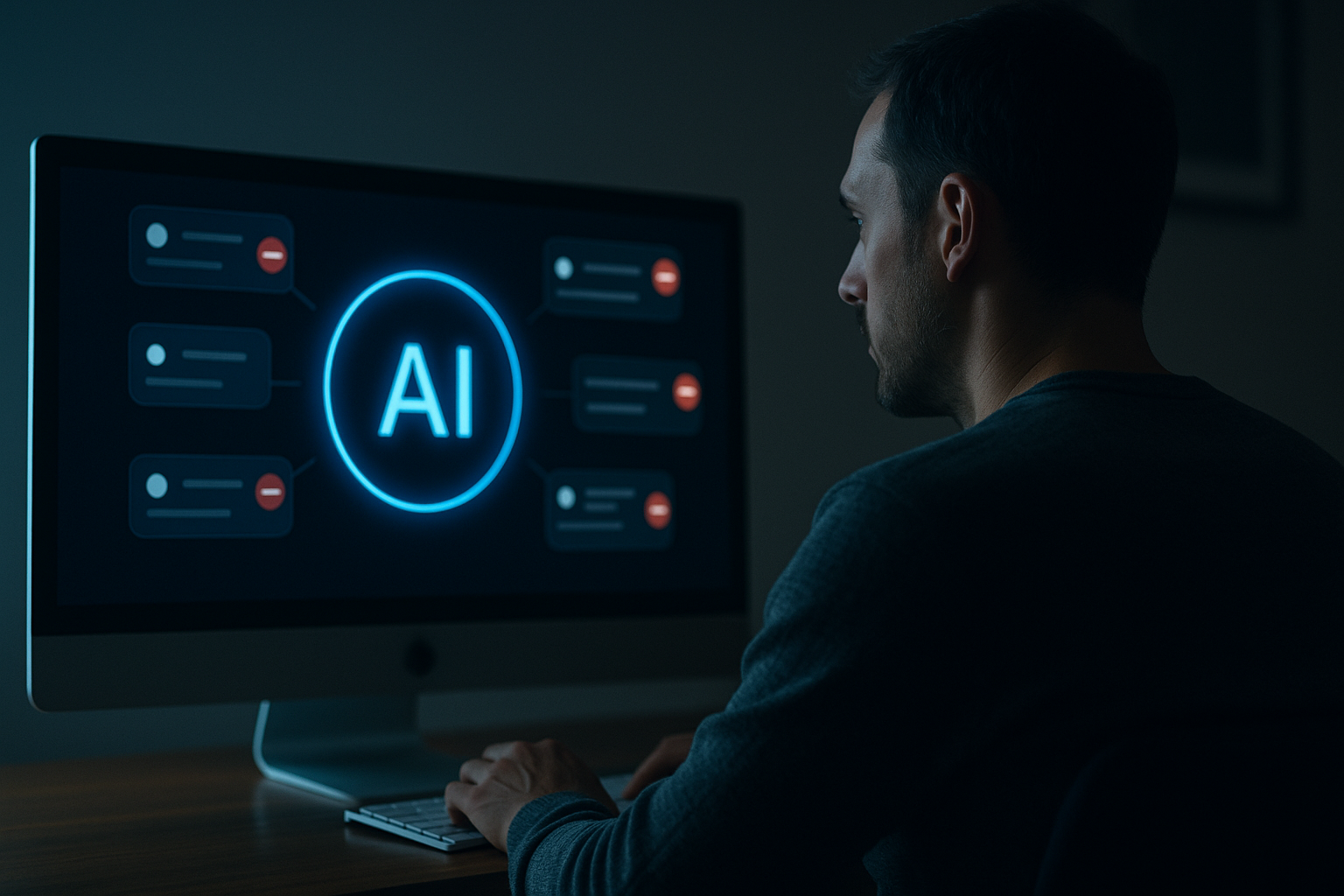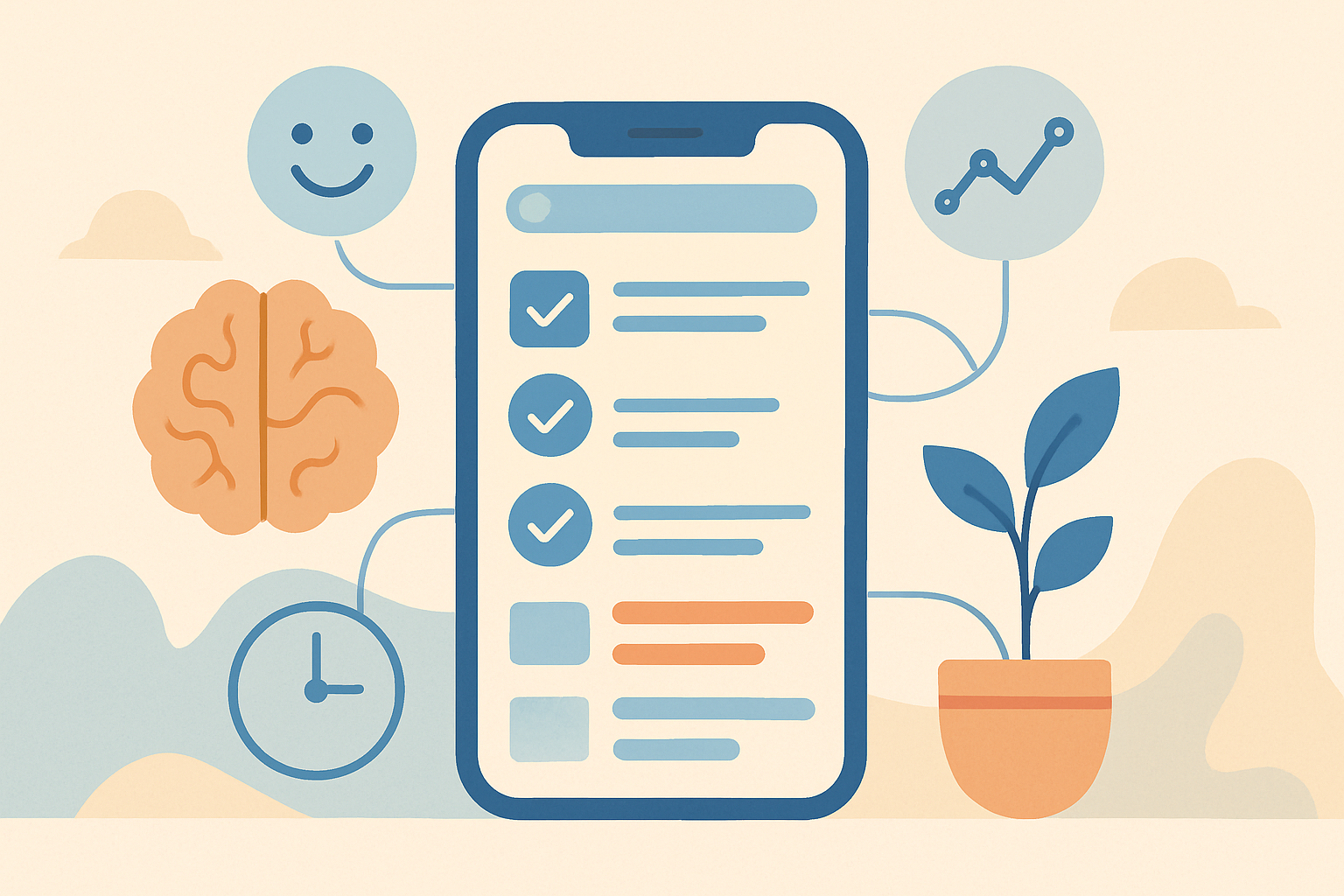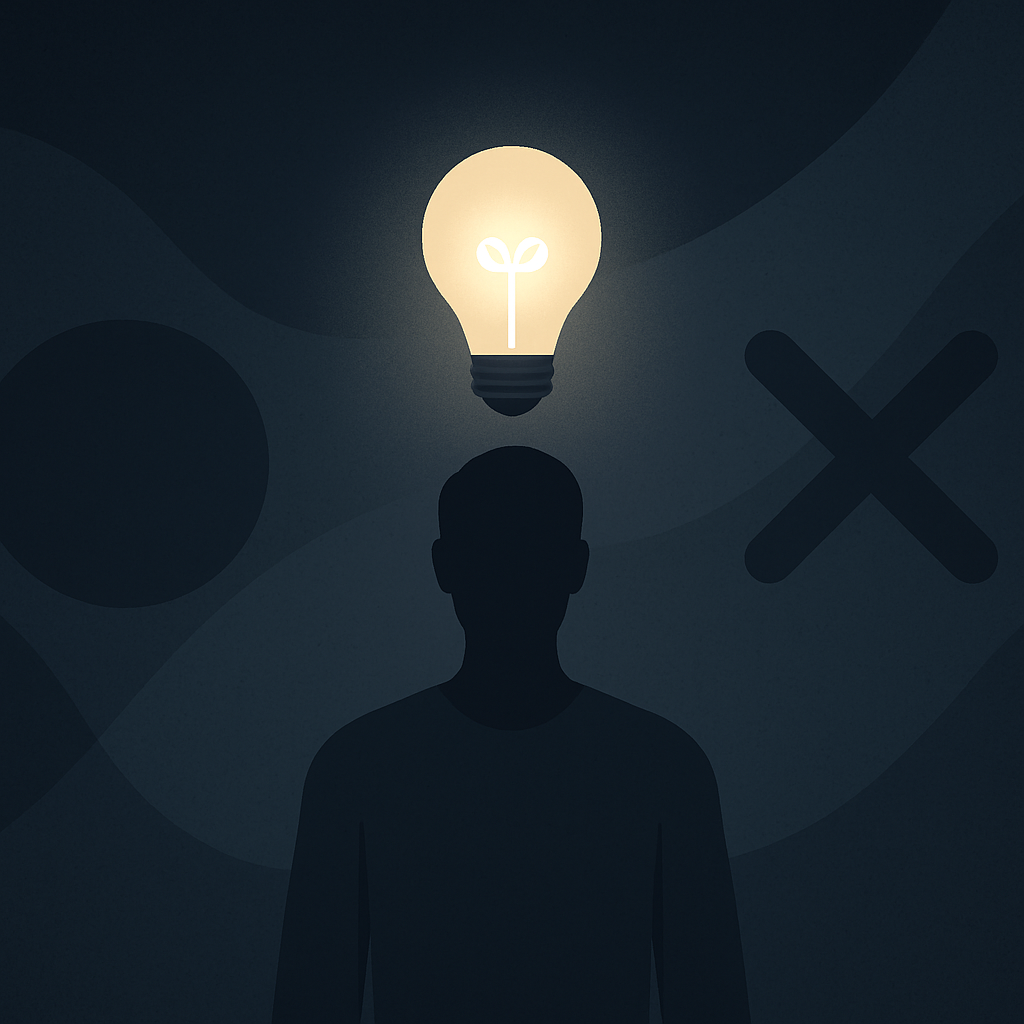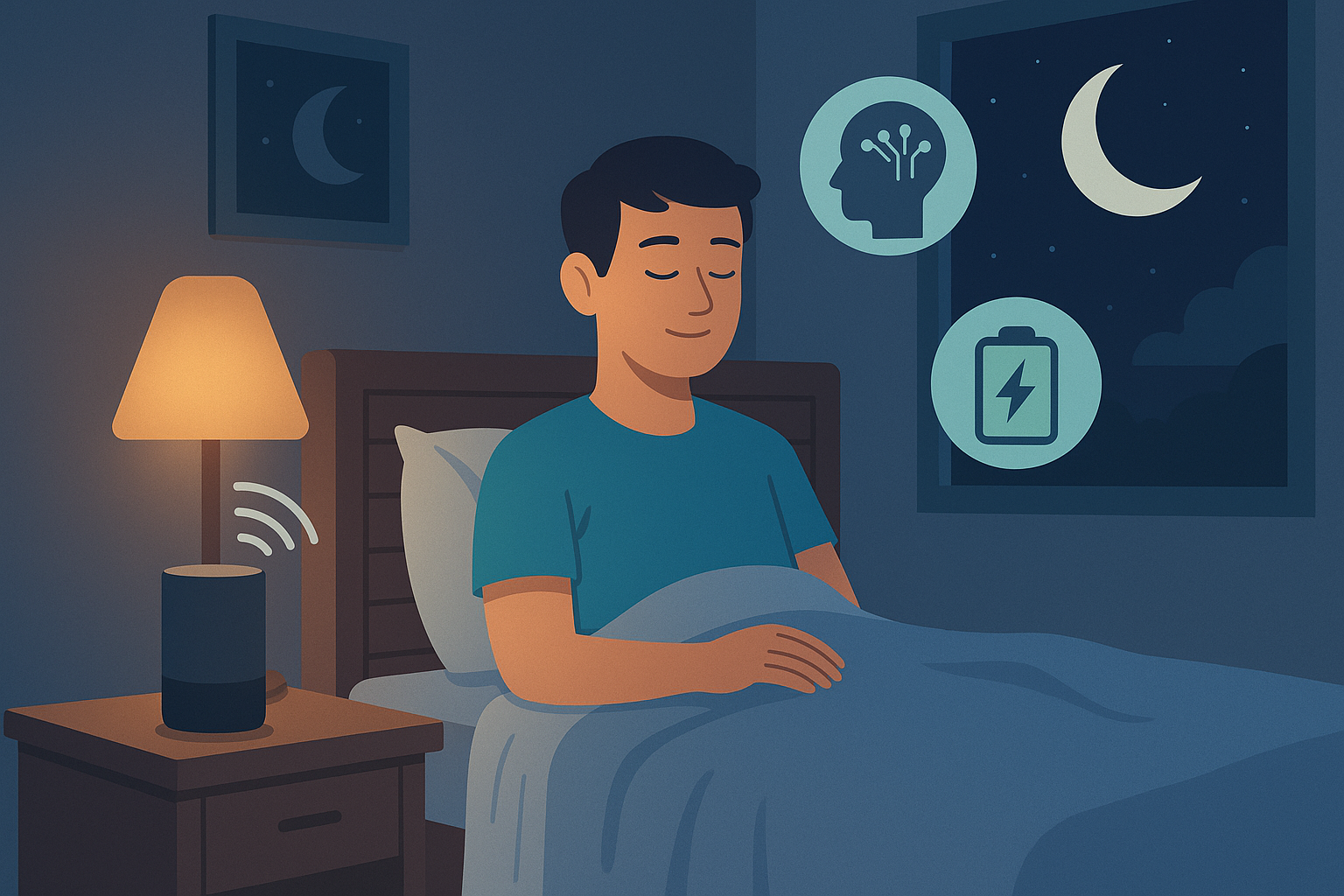Digital distraction has become one of the defining challenges of our time. Between message alerts, social feeds, and multitasking apps, our minds rarely experience silence. Yet mental clarity isn’t a luxury — it’s the foundation of effective work. Digital Balance
The path to digital balance no longer depends only on discipline. Artificial intelligence now gives us tools that detect distraction, anticipate overload, and protect focus automatically. What once required constant effort can now be achieved through intelligent systems that filter noise and create calm.
This is the new frontier of digital balance: one where technology finally learns to stay quiet.

Why Distraction Happens in the First Place
Every digital interruption competes for the same limited resource: attention. The brain’s prefrontal cortex, responsible for decision-making and focus, can only process one meaningful task at a time. When notifications, emails, and background tabs appear, they fragment this neural energy.
Each shift between tasks triggers what neuroscientists call a context switch — a short but costly mental reset that burns glucose and time. Studies from Stanford University found that frequent digital multitaskers perform worse on memory and sustained attention tests than those who focus on a single task.
Distraction is not just about losing seconds; it’s about eroding cognitive endurance. That’s where AI steps in — not to replace awareness, but to automate protection.
How AI Detects and Prevents Distraction
Modern AI systems can analyze your digital behavior, recognize patterns, and intervene before distraction spreads. By understanding when and how your attention drifts, they create a layer of automatic regulation that restores focus.
Here’s how different AI functions contribute to digital balance:
| AI Function | Example Tool | How It Works | Effect on Digital Balance |
|---|---|---|---|
| Context Detection | Motion AI | Reads calendar + app usage to know when to block interruptions. | Prevents task overlap and overload. |
| Adaptive Blocking | Opal AI / Freedom | Learns your distraction habits and blocks apps dynamically. | Reduces noise in real time. |
| Behavioral Feedback | RescueTime / Reclaim | Tracks focus patterns and provides visual data. | Builds awareness for sustainable balance. |
| Ambient Control | Brain.fm / Endel | Generates AI sound environments that enhance concentration. | Keeps mind anchored through sound. |
These tools shift the effort from willpower to automation. Instead of forcing yourself to ignore distractions, you build an environment where they can’t easily reach you.
Example: Reclaiming Focus with AI
Consider Daniel, a freelance video editor. His workflow constantly broke down due to incoming messages and unscheduled client calls. Despite using “Do Not Disturb” modes, his focus still fragmented throughout the day.
After integrating Motion AI and Freedom, his system automatically blocked Slack, Gmail, and social platforms during creative sessions. Motion analyzed his task durations and suggested optimal times for deep work. Freedom adapted to his routine, identifying when he was most vulnerable to distraction and tightening the block windows.
Within two weeks, Daniel’s uninterrupted focus time increased by 43%. He didn’t feel “disciplined” — he felt free.
AI didn’t control him; it created the calm space where clarity could reappear.
When Technology Learns to Stay Quiet
A healthy digital environment doesn’t rely on constant alerts. It relies on silence — the kind that allows thought to expand. Artificial intelligence can now act as a personal gatekeeper, filtering what deserves attention and what doesn’t.
Smart notification systems like Reclaim, Notion AI, and Microsoft Copilot 365 can summarize low-priority messages into end-of-day digests. Instead of reacting to every ping, you receive an organized report of what truly matters.
This aligns with the core principle of digital balance: technology adapts to your rhythm, not the other way around.
Example:
You’re preparing a presentation. Your AI assistant detects 12 incoming emails, categorizes them by urgency, and hides all non-critical ones. At the end of the session, it delivers a concise summary — three actionable items and one reminder — so you can transition smoothly without mental residue.
This is cognitive hygiene in action — the digital equivalent of a clean desk.
Restoring Flow Through AI Awareness
Distraction isn’t only visual. It’s emotional. Every interruption activates the brain’s reward system, releasing dopamine that feeds instant gratification. Over time, this rewires the brain to crave micro-stimulation.
AI tools trained on behavioral data can break this loop by replacing randomness with rhythm. Apps like Serene AI or Tability integrate flow cycles into your routine: blocks of focused work followed by automated micro-rests.
For example, after 50 minutes of sustained attention, your system may dim notifications, play a short ambient track from Endel, and then prompt a two-minute pause. This cycle leverages neuroscience to regulate energy instead of depleting it.
Over days, you begin to associate digital work with a calm, stable tempo rather than constant alertness. The result is digital balance — technology that breathes with you instead of against you.
Table: Building an AI-Assisted Focus Routine
| Time of Day | AI Tool | Purpose | Result |
|---|---|---|---|
| Morning | Motion AI | Schedules deep work | Creates calm start, less reactive |
| Midday | Freedom / Opal AI | Adaptive distraction blocking | Maintains focus during peak hours |
| Afternoon | RescueTime | Measures energy dips | Provides awareness for rest timing |
| Evening | Endel | Active digital recovery | Restores balance, prepares mind for rest |
Each of these systems works together like a nervous system for your digital life — self-regulating, quiet, and responsive.
The Long-Term Impact of Automated Focus
Over time, consistent use of AI distraction management tools reshapes both workflow and identity. You begin to see attention not as something to fight for, but as something to protect.
Instead of micromanaging every input, you design meta-habits: rules that the system enforces for you. For instance:
- Emails are read twice daily, never instantly.
- Social apps remain blocked during peak cognitive hours.
- All tools sync to reflect one master priority list.
What emerges isn’t restriction — it’s serenity. Digital balance becomes less about limiting access and more about aligning intention with technology.
Why Digital Balance Is a Competitive Edge
In an economy where creativity and insight define value, focus is currency. The professionals who can sustain deep, uninterrupted thinking outperform those constantly reacting to noise.
AI doesn’t make you less human; it makes your digital environment more humane. By filtering the chaos, it amplifies your best cognitive states — those rare moments where work feels effortless, time dissolves, and you create something that matters.
This is the hidden promise of AI automation: not just efficiency, but mental freedom.
Conclusion
Technology has evolved to demand attention; now it can evolve to protect it. Through intelligent automation, you can reclaim mental stillness in the middle of digital chaos.
Digital balance is not about cutting technology out of your life — it’s about teaching it to respect your mind. With AI as your silent partner, distraction fades, focus strengthens, and peace becomes a natural part of your workflow.
Further Reading & Related Insights
Internal link:
- How to Design a Distraction-Free Digital Setup — Learn how to build a workspace that naturally promotes digital calm and focus.
External links:
- Stanford HCI Study – The Attention Economy and Human Focus
- Nir Eyal – Indistractable: How to Control Your Attention and Choose Your Life
Blog
This section provides an overview of the blog, showcasing a variety of articles, insights, and resources to inform and inspire readers.
-

AI Habit Tracking and the New Rhythm of Modern Self-Improvement
AI Habit Tracking. Progress used to depend on discipline. Now, it depends on data.…
-

AI Decision Making and the New Discipline of Intentional Living
AI Decision Making. Every “yes” has a cost. Every time you agree to something…
-

The Perfect AI Night Routine to Sleep Better and Think Smarter
AI Night Routine. Your morning doesn’t begin when you wake up — it begins…
